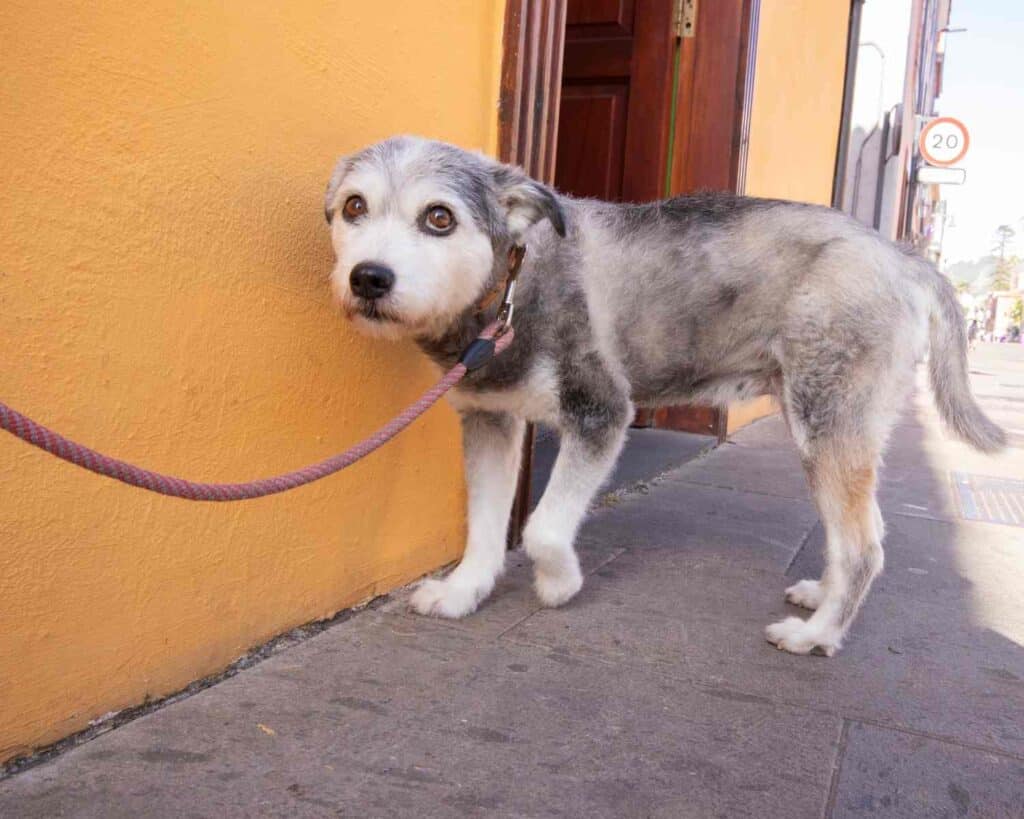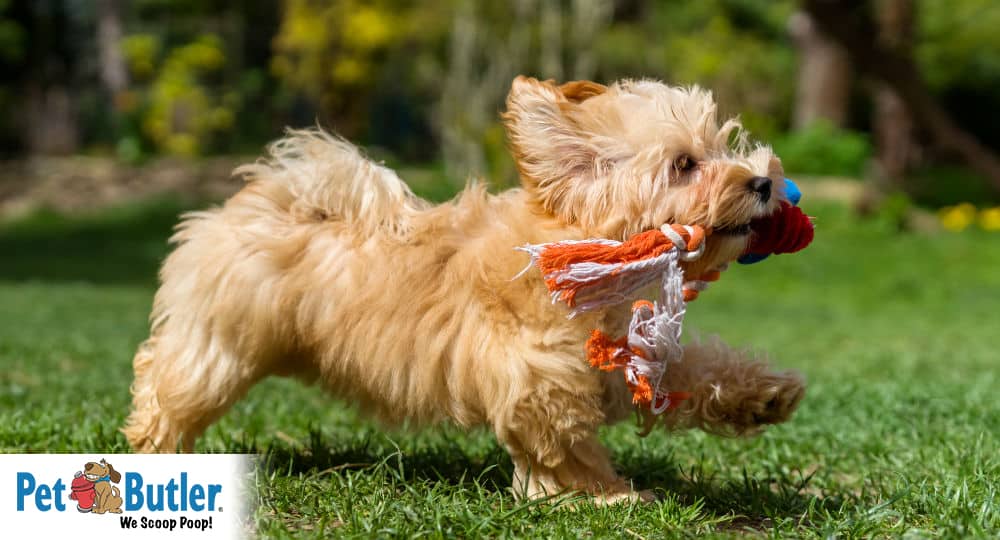It’s not all that challenging to determine what your dog is trying to tell you when he sits longing next to the table, a rope of saliva trailing the floor, staring at the juicy burger you are bringing to your lips. But how about when he yawns while you are vacuuming? Does housekeeping bore him? How about when he bows down on his front legs, rear end in the air, when you get home from yoga class? Is he showing off his own downward facing dog pose?
As a veterinarian, I can’t tell you how helpful it would be if dogs (and especially cats) could talk; I know my pediatrician feels the same about his youngest charges. The good news for vets, pets, and their owners is that years of research on dog behavior and body language has given us plenty of insight into what those eyebrow raises, tail flicks, and curled lips might mean. Deciphering behavior using body language cues helps me determine if a pet is in pain, anxious, happy to see me, or stressed, and it can help you bond with your dog and possibly head off an altercation between animals or know when your canine has discovered a new best friend.
What Does it Mean When Dogs Bark, Howl, or Whine?
First, it helps to remember that dog DNA is closely related to that of its ancestors, wild dogs and wolves. As pack animals, there is a hierarchy in the group that is determined by social cues such as verbal sounds, body stance, tail position and facial expression.
Canine vocal sounds are usually the simplest of the clues humans can utilize to decide what a dog is trying to tell you. Whining: a high pitched soft sound can be heard from a dog that is in pain, anxious, frustrated or seeking attention when a bark has been discouraged. A whine and a whimper can sound similar. A bark, depending on the frequency, volume, and duration, can be used as an alert (read: the evil UPS man is coming to the door), to express excitement (accompanied by a tail wag and a grin), and as a sign of aggression when it is low pitched. Howling dogs may be anxious (think separation anxiety), attention-seeking, or trying to locate their “pack”. How about the dog that howls at the tv or a police siren? Those dogs may be telling the tv canine “hey, I’m here!” and possibly to back off their territory.
We can use body language along with vocalizations to best determine a dog’s emotional state. When in doubt, approach an unfamiliar dog slowly and from the side, avoiding eye contact which is threatening. Likewise, don’t reach over a dog’s head when first physically interacting. Some fearful or reactive dogs may see this as a scary gesture and reactive aggressively or back away, even if your pat was well intentioned.
Dog Body Language Is Relaxed and Approachable
So, what does a relaxed, happy, and approachable dog look like? In its most comfortable, unthreatened state, a dog may be lying on its belly, back legs splayed like a frog, on its back with the belly exposed and tail loose, or on the side with the eyes closed and legs extended. The dog’s ears are also relaxed and limp. In this position, the dog would be vulnerable to another animal or human and its reaction time would be delayed if attacked. Clearly, this is a dog that has no fear of an enemy! When standing, a content dog has its ears up but not forward, may have its tongue hanging out of a partially open mouth, a loose body with weight placed evenly on all four feet, head held high, and the tail down and relaxed. If approached, this dog may give a wag and a wiggle and come closer to be stroked.
Now picture this same dog who has detected the movement of a chipmunk. Alert and interested, the dog may close his mouth and tip his ears forward. His body weight may also shift to the front feet, ready to move if necessary. The tail will be held horizontally to the ground, possibly with a slight twitch, and the eyes will be wide open.
Understanding Dog Behavior With Other Canines
Let’s bring our pet to the dog park, where a particularly dominant dog is chasing our pup relentlessly and aggressively, possibly biting at his ears, and rolling him to the ground. Afraid? You bet! The fearful, submissive dog may roll on his back, tail pulled between his legs and may urinate. He will roll his head to the side but keep his eyelids open to watch for trouble, though any eye contact will be brief and indirect. His lips will be back, and mouth closed, or he may lick at the air or the dominant dog. The ears are generally flat and pulled back as well. Fido is scared and wants to head off further confrontation and attention! Yawning is also a sign of stress and anxiety in dogs. If we had been observant, we may have noticed this cue as well as a tucked tail as soon as Bruiser showed up.
And what about Bruiser? How can you tell a dog who is playing from a dog who is an aggressive bully? A dog bowing forward on its front legs, wagging its tail like a flag, with the ears erect and lips curved into a grin with the tongue out is giving the signal, “game on!” Usually, the dog remains in this position for just a few seconds before breaking into a “catch me if you can” type run. A play bow is distinctly different from the dog that approaches another dog with his hackles raised, a penetrating, unbreaking stare, body position forward, nose wrinkled, a stiff tail, and teeth partially visible. Back off without making eye contact and alert Bruiser’s owner that things are about to get ugly.
I hope these tips give you a little better idea what your dog may be trying to say. Be watchful of your body language as well as to those canines around you. Maybe even try a play bow next time you are home and watch your dog bounce with joy!




